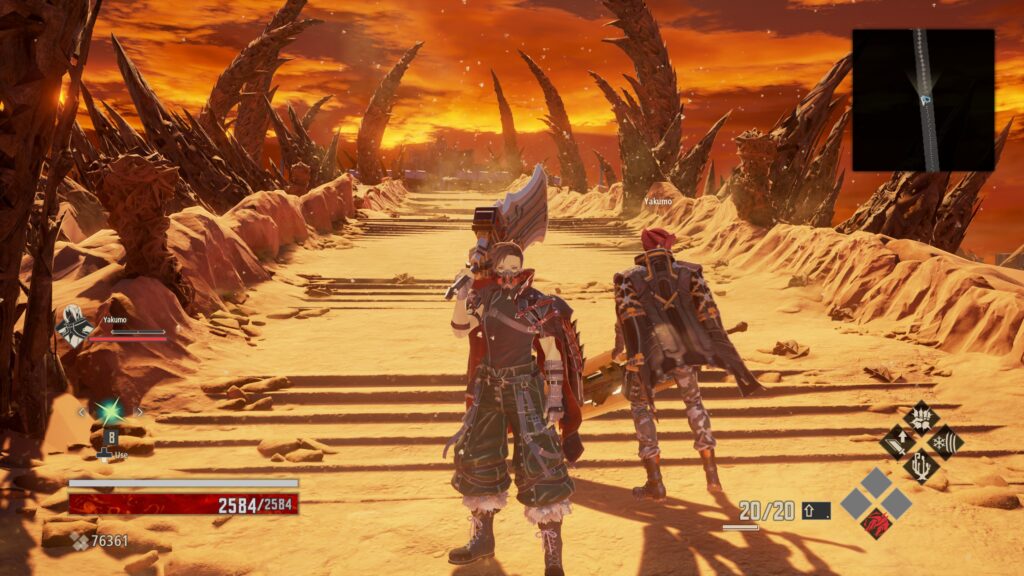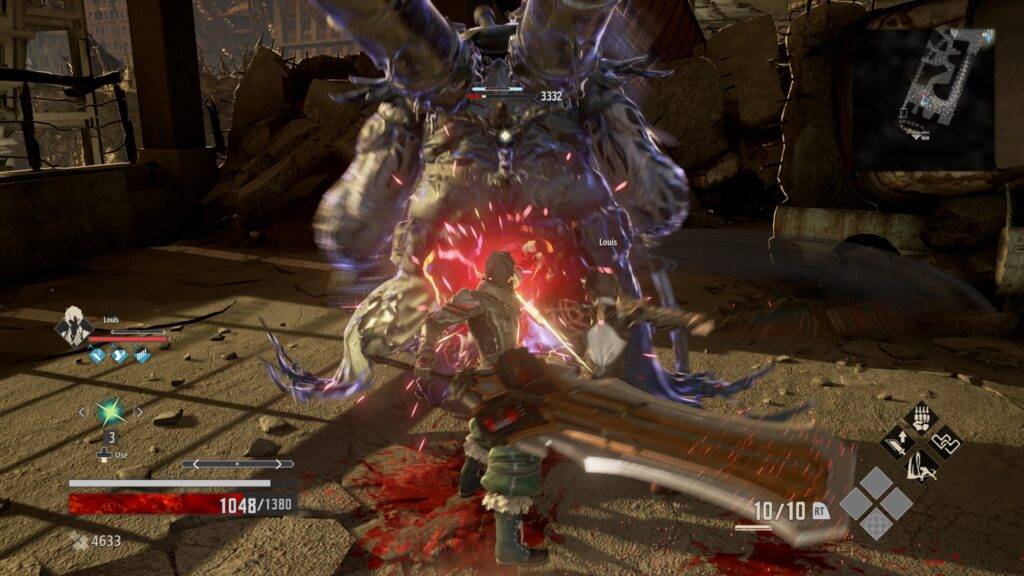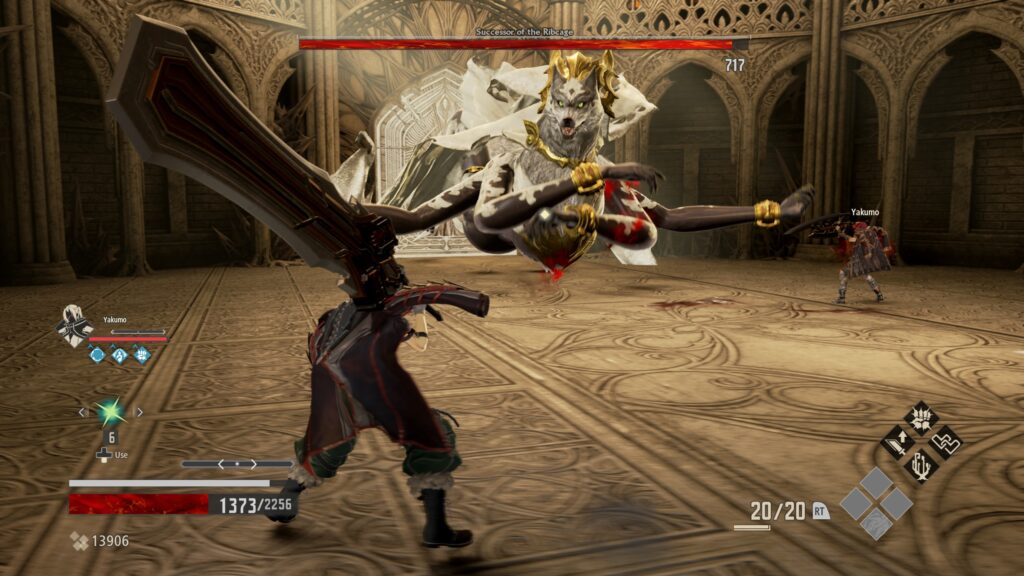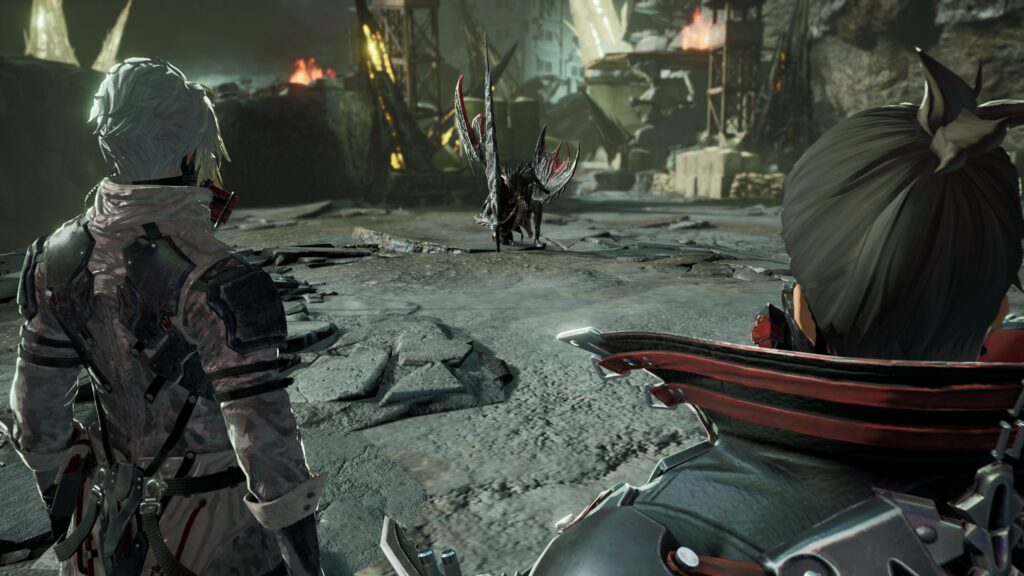
I bought this a while back after hearing about it being one of the better clones of Dark Souls while also featuring some unique mechanics of its own. I thought that the anime aesthetics might be appealing too. Unfortunately while it’s decent enough as an action game, it copies Dark Souls so apishly without consideration for why the legendary games did things that way that its very existence offends me. Plus I realized that the anime aesthetics come with anime story sensibilities that are so rote and full of the usual tropes.
Though your character starts out knowing nothing as you have lost all of your memories, you piece together the full story quickly enough. Civilization has collapsed and to fight off powerful monsters, humans have been turned into Revenants. These are essentially vampires who subsist on human blood but are superhumanly strong and nearly immortal. Regeneration however causes them to lose their memories and being deprived of blood for too long leads them to frenzy into mindless monsters called the Lost. Human blood is obtained both from donations from the surviving human population and from mysterious blood springs that appear. Accompanied by a woman named Io who has also lost her memories but insists she serves you, you meet up with another Revenant named Louis who wants to seek out the source of the blood springs. Together you discover that the player has the power to safely absorb and integrate the lost memories of Revenants as well as clear the miasma that makes travel difficult, making you an ideal addition to Louis’ team.

The basic combat mechanics are very Souls-like. You don’t get a shield but you can block with your weapon. A stamina bar limits how much you can do before you need to take a breather. You have rolls, backstabs and parries. Poise even exists in this game though you’d have to look it up to understand it’s called balance here. Interestingly, your armor in this game is your Blood Veil, and that determines which special attacks you get including backstabs. You can have a companion with you all of the time and the game seems to expect that. One great change is that spell-like abilities including ranged attacks are powered by ichor. You regain a little ichor simply by using normal attacks, draining enemies of blood I suppose, or regain a lot by using drain attacks. This means that you want to be using ichor-fueled abilities all the time as it’s so easy to recharge. Even as a warrior-type, you can spend ichor to temporarily buff your attack or defense or even cast real spells since your equipped weapon doesn’t limit or affect those abilities at all.
The main way that Code Vein tries to differentiate itself is that you can effectively switch your build at any time, even on the fly. Your build is determined by your Blood Code, which sets your stats like strength, dexterity, willpower and so on as well as health, ichor level and even base mobility, which is how fast you move. Naturally different codes are suited for different play styles, such as two-handed weapon wielder, marksman, caster and so on. The game lets you switch codes any time at will, not even needing to go to its equivalent of the bonfire which gives you tremendous flexibility. Accompanying the codes are gifts which are active and passive abilities that can be equipped in the provided slots. The active abilities are the ones that cost ichor to use. Initially each gift is attached to a specific code but you can later unlock them such that the gift can be used with any code at all. You’re still bound by stat prerequisites of course but you can imagine how much flexibility this gives. You don’t get to choose to invest points in particular stats. They just automatically scale in accordance to your equipped Blood Code.

This sounds decently good except that it’s so unpolished. The pace of combat is faster and hit boxes are iffy, making blocking unreliable enough that most players just roll. More importantly the basic moveset of combat is overshadowed by the special abilities of your Blood Veil and the ichor-fueled gifts. To compensate, the bosses are granted frankly bullshit moves with ridiculous damage and hitboxes, large particle effects that make it hard to see what they are doing and area of effect get-off-me moves. The game also happily throws multiple enemies at a time at you during normal gameplay, in waves even during invasion events. This makes the pace of combat very different from the deliberative, controlled style of Dark Souls. Together with the sometimes unpredictable effects of having a companion along, you sometimes quickly die to a boss almost before you know what is going on and you sometimes win by wildly rolling and wailing away with your weapon. It’s so chaotic and unsatisfying to me.
This kind of half-heartedness is all over the level design as well. You’ll see mainly two types of environmental aesthetics in this game, a kind of post-apocalyptic urban cityscape that frankly looks dreary and awful; and Gothic fantasy architecture that are directly lifted from Dark Souls. There is one cathedral-style level that is beautiful and delightfully confusing to navigate but is of course lifted straight from its inspiration. Everything else is just mediocre. At no point did I ever stop to admire the scenery. Sure, there are Dark Souls-style shortcuts to unlock, down to ladders that even look and sound the same but there are perhaps only one or two levels that are fun to navigate. I do grant that Code Vein innovates by having a map that actually records your footsteps on it so you can easily see if you’re already been down a particular path. It’s handy but doesn’t help much when there multiple vertical floors to the level as the map is two-dimensional.

Then we get to the story and the characters. Despite the inherent horror of vampires feeding on humans to be strong enough to protect humanity, this is a remarkably sentimental, sweet anime story. Characters seemingly do bad things but it turns out they have good reasons for doing so. All of the revenants have cute hobbies and all of the girls must be sexy. I am especially irritated that one companion, Mia, wears a top where one strap is artfully fallen off a shoulder all the time. Lots of power of friendship tropes and vows to be strong to protect loved ones all around. Lots of characters thanking each other for their sacrifice and hard work. I know this is very Japanese but it’s so formulaic and omnipresent here that I find it difficult to understand how the writers could come up with this without gagging. The story works, yes, but it’s utterly unappealing to me and I can’t emphasize enough how much I detest the character of Io. She’s presented from the beginning as a scantily-clad woman with huge breasts who is for unknown reasons totally devoted to the player. Predictably her role in the story ends up being that of the sacrifice.
For all its faults, I have to admit it’s combat model is at least decent and the way it allows the player to try any build any time is intriguing. I’d argue that it’s enemy design fails to bring out the best in its combat model and the existence of the Queenslayer Blood Code kind of makes a joke out of every other Blood Code. As always in these games, the boss battles are the toughest bottleneck and the Queenslayer code is so much better at fighting bosses that not using it is deliberately handicapping yourself. The level design is uninspiring at best and most of the time just awful. The less said about the story and the characters the better. Anyway I persevered to the end because it’s not that hard with a companion around and I wanted to see the ending. But this taught me that if I want to play a Souls-like I should play one made by the original designers who actually knew what they were doing.